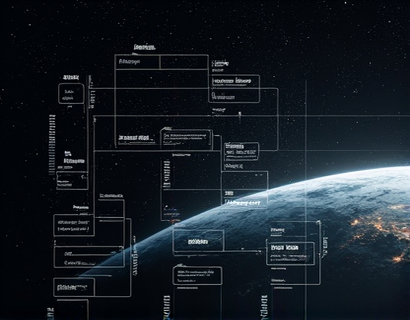Decentralized DAO Management: Harnessing Advanced Analytics for Enhanced Governance and Sustainable Growth
In the rapidly evolving landscape of decentralized finance and autonomous organizations, the role of governance has become increasingly critical. Decentralized Autonomous Organizations (DAOs) represent a novel approach to management, leveraging blockchain technology to create transparent, community-driven entities. However, effective governance in DAOs is not without its challenges. Traditional methods often fall short in providing the necessary tools and insights for administrators to make informed decisions. This is where advanced analytics comes into play, offering a transformative solution to enhance governance and drive sustainable growth within DAOs.
Understanding DAO Governance
Before delving into the role of advanced analytics, it's essential to understand the core principles of DAO governance. A DAO is essentially a self-governing organization where decisions are made collectively by its members, typically through smart contracts on a blockchain. This decentralized structure eliminates the need for a central authority, promoting transparency and reducing the risk of corruption. However, the absence of a central figure also means that governance can become complex and cumbersome, especially as the organization scales.
Effective governance in a DAO involves several key components: decision-making processes, conflict resolution, and strategic planning. Decision-making is often facilitated through proposals and voting mechanisms, where members propose changes or new initiatives and the community votes on them. Conflict resolution is crucial to maintain harmony and ensure that the organization operates smoothly. Strategic planning ensures that the DAO remains aligned with its long-term goals and adapts to changing environments.
Challenges in DAO Governance
Despite its potential, DAO governance faces several challenges that can hinder its effectiveness. One of the primary issues is the lack of sophisticated tools for managing and analyzing governance data. Traditional methods rely heavily on manual processes, which are time-consuming and prone to errors. This can lead to delayed decision-making and a lack of transparency, undermining the very principles that make DAOs attractive.
Another significant challenge is the diversity and dispersion of members. DAOs often have a global membership base, making coordination and communication difficult. This dispersion can result in fragmented opinions and a lack of consensus, complicating the governance process. Moreover, the technical complexity of blockchain and smart contracts can be a barrier for non-technical members, further impeding effective participation.
Role of Advanced Analytics in DAO Governance
Advanced analytics offers a powerful solution to these challenges by providing DAOs with the tools they need to streamline governance and make data-driven decisions. By leveraging sophisticated software, administrators can gain deep insights into various aspects of the organization, from member engagement to proposal outcomes. This enhanced visibility enables more informed and efficient governance, ultimately driving sustainable growth.
One of the key benefits of advanced analytics in DAO governance is the ability to automate and streamline processes. Automation reduces the manual workload, allowing administrators to focus on strategic tasks rather than routine operations. For instance, automated voting systems can track and tally votes in real-time, providing immediate results and reducing the risk of human error. This not only speeds up the decision-making process but also increases transparency, as all members can see the outcomes instantly.
Comprehensive Data Visualization
Data visualization is another critical aspect of advanced analytics in DAO governance. By presenting complex data in intuitive and accessible formats, administrators can quickly identify trends, patterns, and anomalies. Dashboards and interactive charts allow for real-time monitoring of key metrics, such as member participation, proposal adoption rates, and financial health. This visual representation of data helps administrators make sense of large datasets and derive actionable insights.
For example, a dashboard might display a heat map of member activity, highlighting areas of high engagement and potential disengagement. This information can be used to tailor communication strategies and engage inactive members, fostering a more active and participatory community. Similarly, visualizing proposal outcomes over time can reveal the effectiveness of different governance approaches, guiding future decision-making.
Enhanced Collaboration and Communication
Advanced analytics tools also facilitate better collaboration and communication within the DAO. By centralizing data and providing a common platform for analysis, these tools break down silos and promote a more cohesive community. Members can access relevant data and insights from a single source, reducing the need for multiple communication channels and ensuring everyone is on the same page.
Discussion forums and collaborative workspaces integrated with analytics tools can further enhance communication. Members can discuss proposals, share data insights, and collaborate on strategic initiatives in real-time. This integrated approach not only improves efficiency but also fosters a sense of community and shared purpose, which is vital for the long-term success of the DAO.
Driving Sustainable Growth Through Data-Driven Decisions
Ultimately, the goal of implementing advanced analytics in DAO governance is to drive sustainable growth. By making informed decisions based on comprehensive data, administrators can steer the organization towards its strategic objectives. This data-driven approach ensures that resources are allocated efficiently, risks are managed proactively, and opportunities are seized promptly.
One of the most significant ways advanced analytics contributes to sustainable growth is through predictive analytics. By analyzing historical data and current trends, predictive models can forecast future scenarios, helping administrators anticipate challenges and opportunities. For instance, predictive analytics can identify potential bottlenecks in the governance process or forecast member turnover, allowing for proactive measures to be taken.
Financial management is another area where advanced analytics can have a profound impact. By providing real-time insights into the DAO's financial health, administrators can make informed decisions about budgeting, investments, and resource allocation. This transparency and control over financial data help build trust among members and ensure the long-term financial stability of the organization.
Case Studies and Real-World Applications
Several DAOs have successfully implemented advanced analytics to enhance their governance and achieve sustainable growth. One notable example is a decentralized governance platform that integrated advanced analytics tools to streamline its decision-making processes. By automating voting and providing real-time data visualization, the platform reduced the time required for proposals to be approved from weeks to days. This not only increased efficiency but also boosted member engagement, as the outcomes were more transparent and immediate.
Another case study involves a DAO focused on sustainable projects. By leveraging predictive analytics, the DAO was able to identify and prioritize projects with the highest potential impact on environmental goals. This data-driven approach ensured that resources were allocated to the most effective initiatives, leading to tangible results and strengthening the DAO's reputation in the community.
Implementing Advanced Analytics in Your DAO
For DAO managers and administrators looking to harness the power of advanced analytics, the first step is to assess your current governance processes and identify areas for improvement. This involves understanding the specific challenges you face and determining how analytics can address them. Once the goals are clear, the next step is to select the right tools and platforms that align with your needs.
There are several advanced analytics platforms available that cater specifically to DAO governance. These platforms offer a range of features, from automated voting systems and data visualization tools to predictive analytics and financial management modules. When choosing a platform, consider factors such as ease of integration, scalability, and user-friendliness. It's also important to ensure that the platform is compatible with your existing blockchain infrastructure.
Once the platform is in place, the next step is to train your team and members on how to use the new tools effectively. Providing comprehensive training and support ensures that everyone can leverage the analytics capabilities to their full potential. Regular workshops and documentation can help maintain a high level of proficiency and encourage adoption.
Building a Culture of Data-Driven Decision-Making
Implementing advanced analytics is not just about adopting new tools; it's also about fostering a culture of data-driven decision-making within the DAO. This cultural shift requires leadership and commitment from administrators and members alike. Encourage open discussions about data insights and their implications, and create incentives for members to engage with the analytics platform.
Transparency is key in this process. Make sure that all data and insights are accessible to the community, promoting trust and collaboration. By involving members in the analysis and decision-making process, you can build a more engaged and empowered community. This participatory approach not only enhances governance but also strengthens the overall resilience and adaptability of the DAO.
Conclusion
In conclusion, advanced analytics represents a transformative force in DAO governance, offering the tools and insights needed to overcome traditional challenges and drive sustainable growth. By streamlining processes, enhancing collaboration, and enabling data-driven decisions, advanced analytics empowers administrators to govern more effectively and efficiently. As the decentralized ecosystem continues to evolve, embracing these advanced solutions will be crucial for DAOs looking to thrive in a competitive and dynamic environment.










































